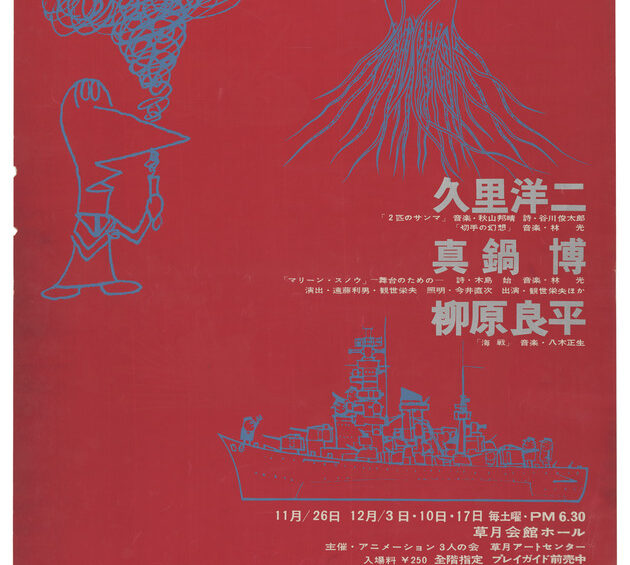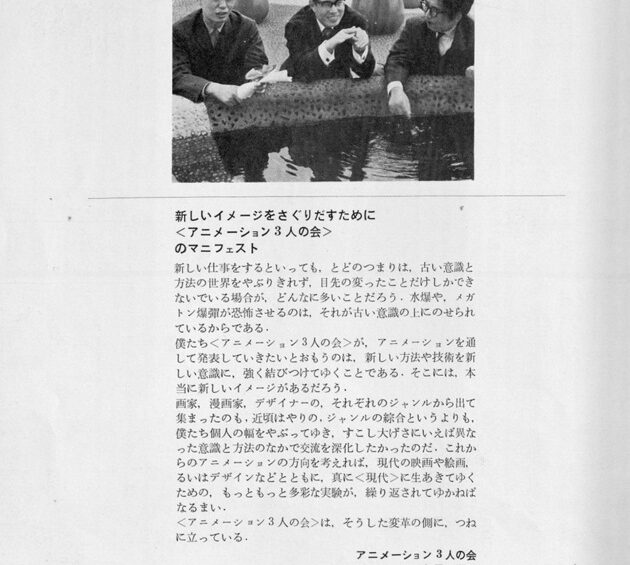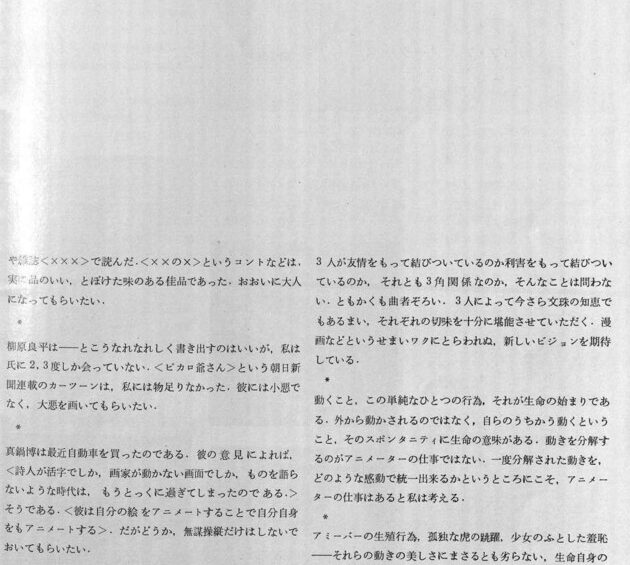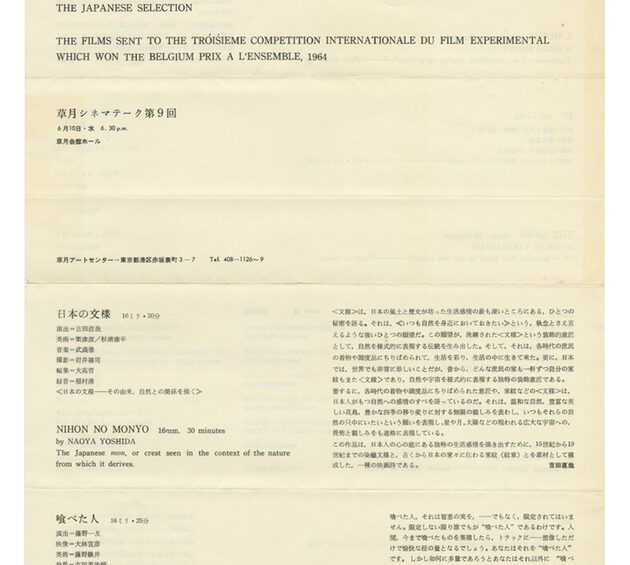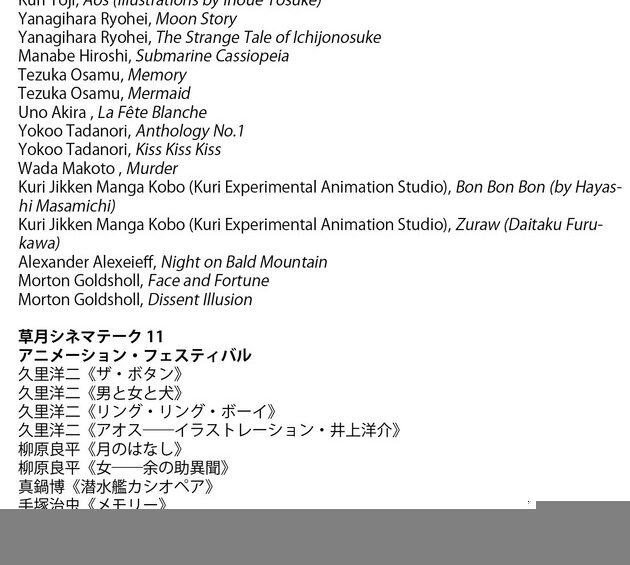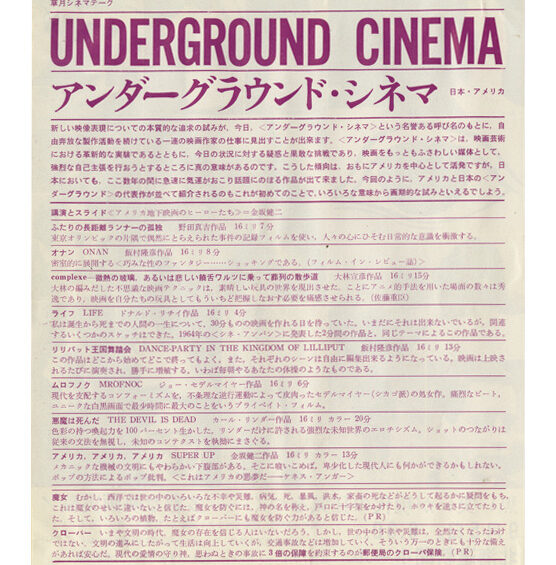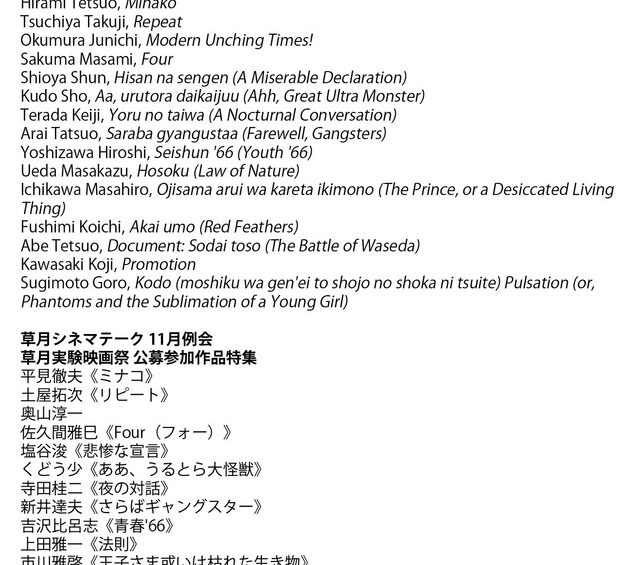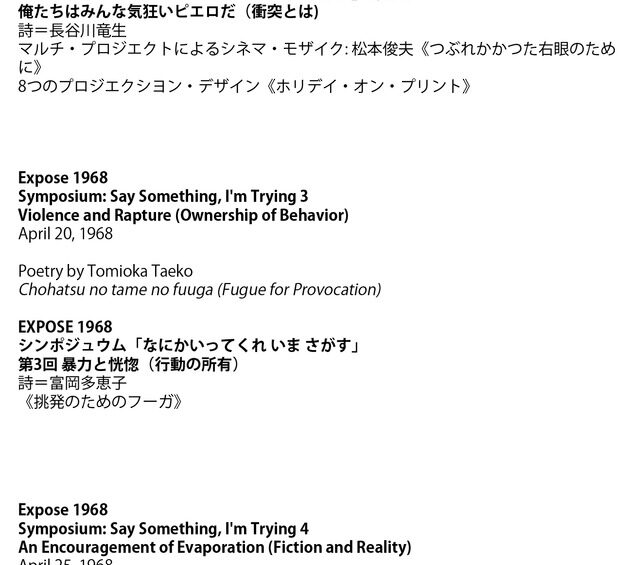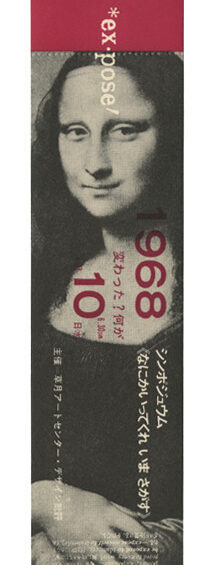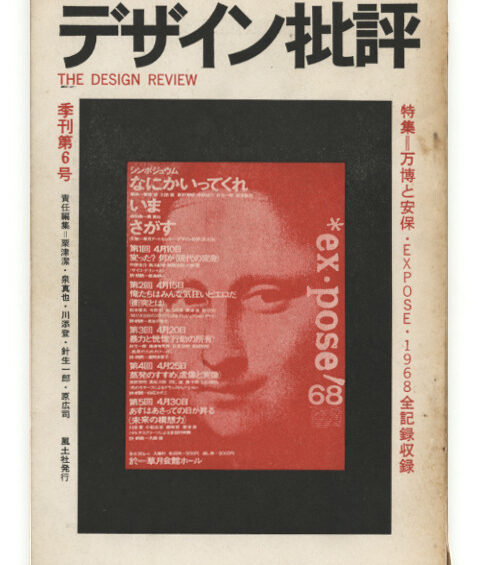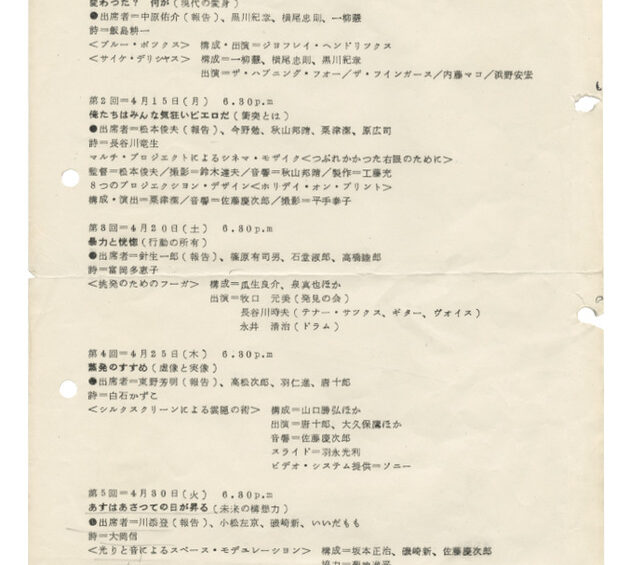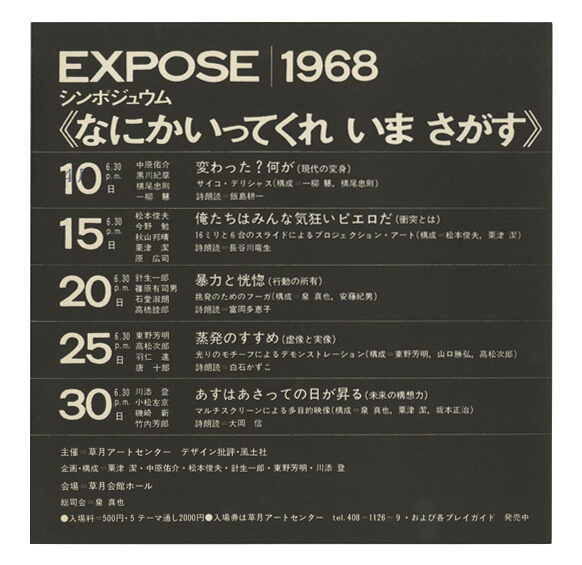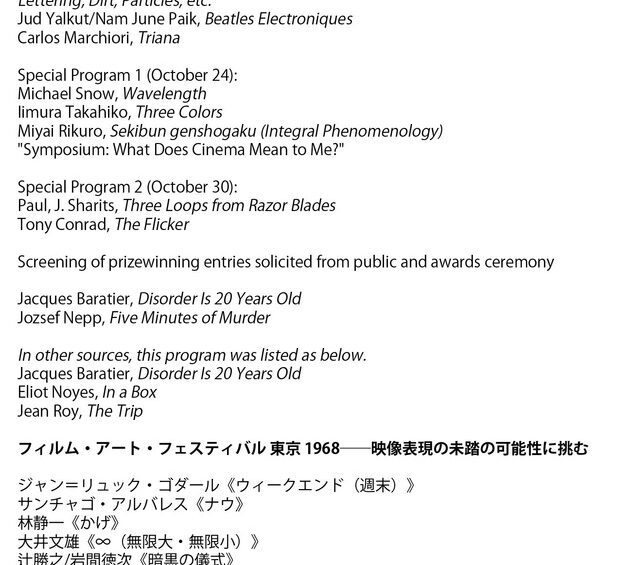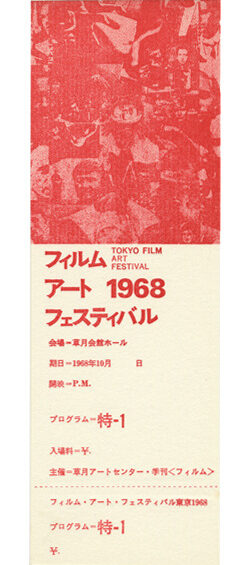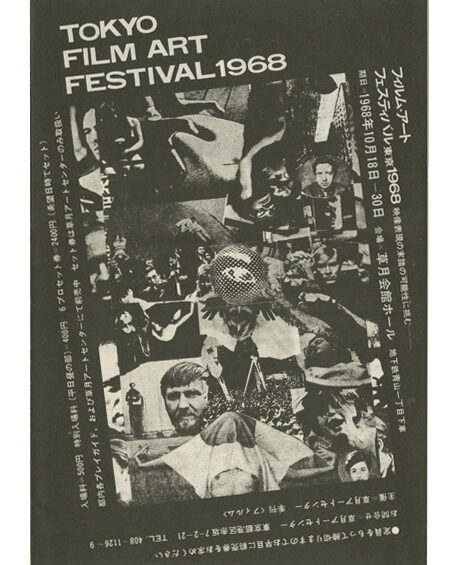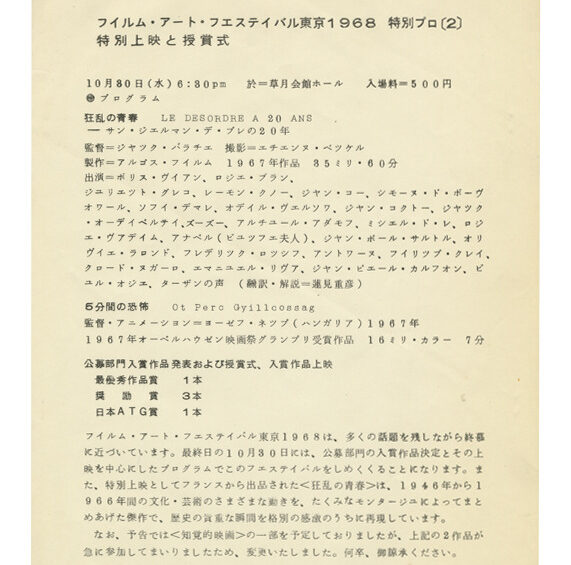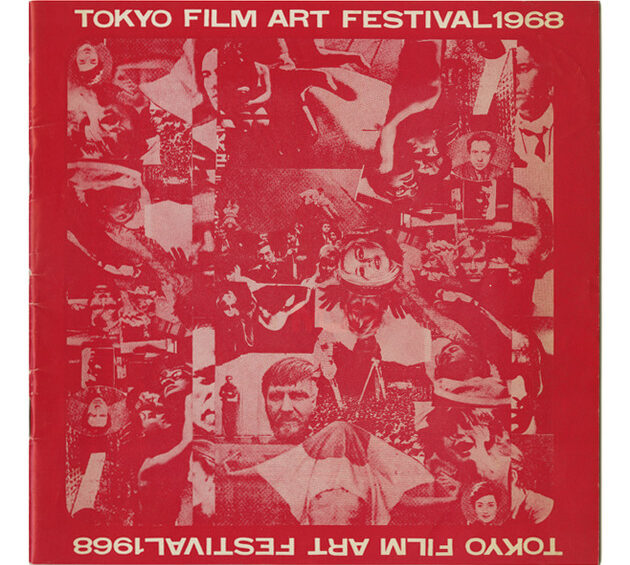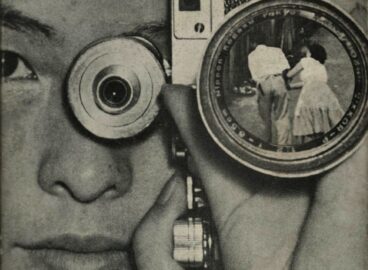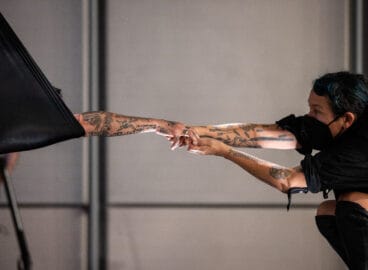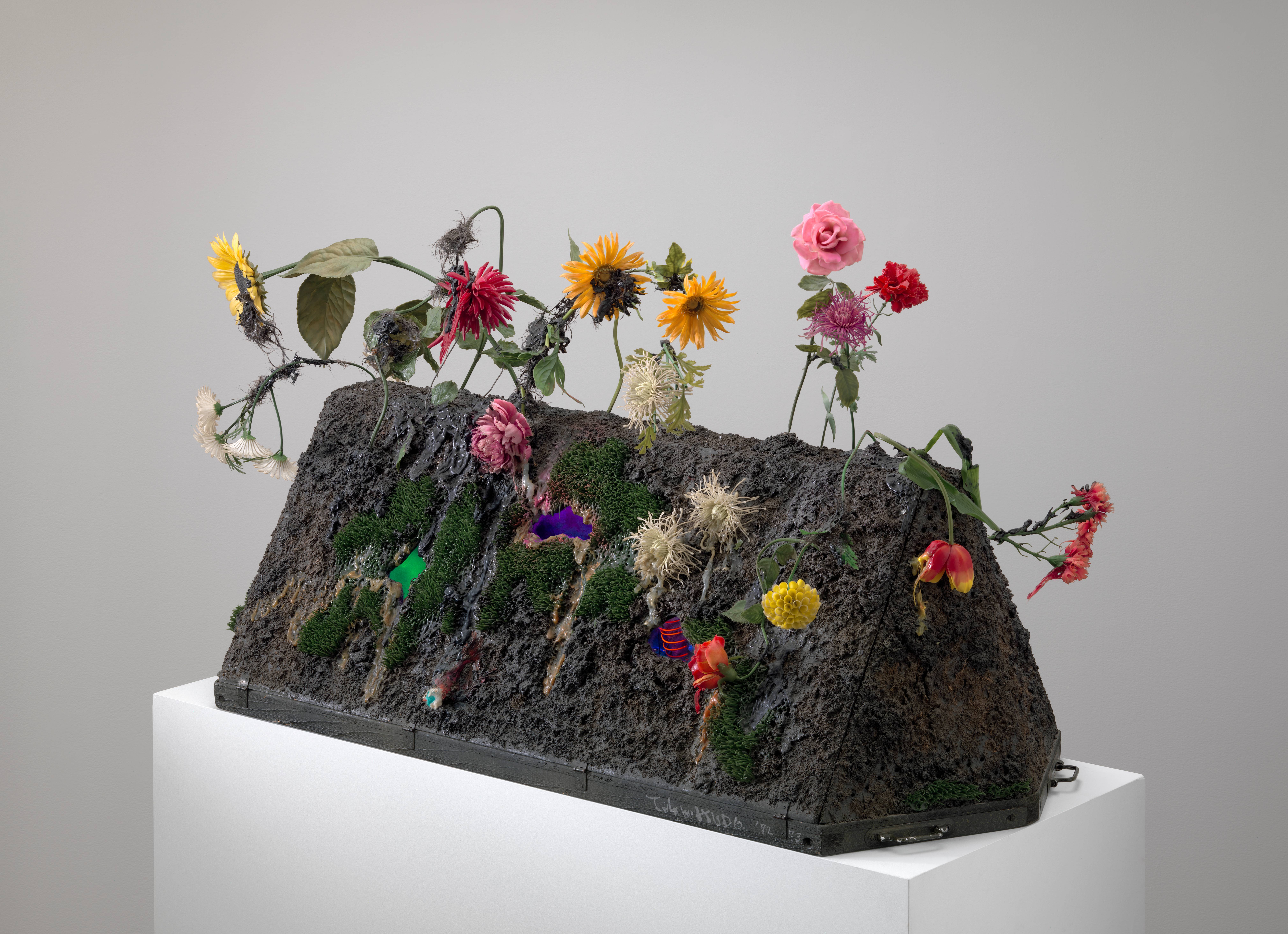It is impossible to consider the art created in Japan during the socially and politically tumultuous 1960s without factoring in the role of the spaces or sites where that art was exhibited. Not only film activities but also music, theater, art, dance, photography, design, and literature were supported by sites that fostered artistic expression. Among those many spaces that existed, one of the most significant was the Sogetsu Art Center (SAC), which was directed by Teshigahara Hiroshi and began as a “space for exchange and the development of artistic culture.”
The SAC’s film activities began in 1957, when Teshigahara Hiroshi and Hani Susumu founded the Cinema 57 group, which screened independent films while also making their own work, Tokyo 1958. The screening activities eventually led to the establishment of the Art Theater Guild, which specialized in showing art films. In November 1960, the animator Kuri Yoji and others held the screening event “Three-Person Animation.” This was followed in July 1961 by the start of the Sogetsu Cinematheque, which presented experimental films, documentaries, and works for television. In February 1966, the Sogetsu Cinematheque invited Henri Langlois of the Cinémathèque Française to curate the International Avant-Garde Film Festival, which presented historical and contemporary experimental films from around the world and influenced many artists in Japan. Underground Cinema, a festival presented in June of that same year, introduced experimental works by filmmakers such as Iimura Takahiko, Kanesaka Kenji, and Stan Brakhage and led to the popularization of the term “underground cinema” in Japan. In November 1967, the first Sogetsu Film Art Festival—renamed “Film Art Festival 1968” the following year and canceled in 1969 due to political protests—served to expand the space in which established and emerging filmmakers working in experimental and avant-garde genres actively shared their work.
The following section presents ephemera, posters, and film excerpts related to eight representative film events at the Sogetsu Art Center. Do you have information that you would like to share about these films and events? Are there materials that you would like to see added to this feature? Please share your thoughts and links in the discussion area.
Three-Person Animation (1960)
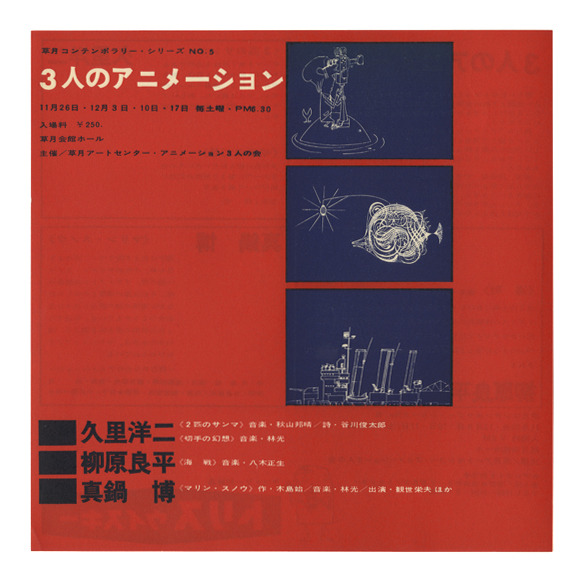
Event date: November 26, December 3, 10, 17, 1960. 183 x 184 mm. KUAC catalog no. 067 (a). Courtesy Sogetsu Foundation and The Keio University Art Center (KUAC)
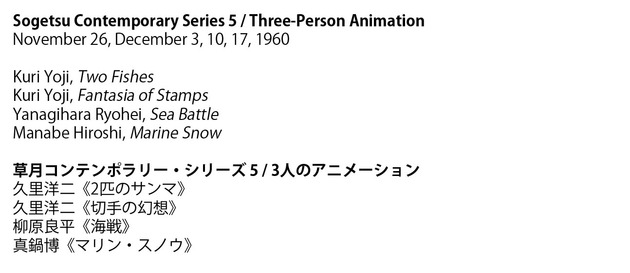
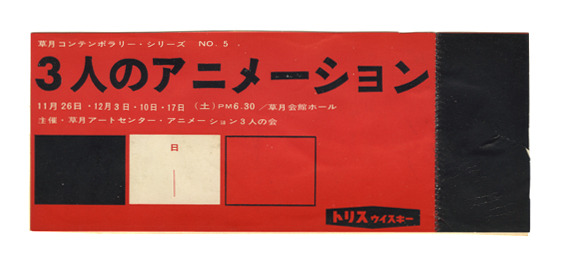
Event date: November 26, December 3, 10, 17, 1960. 69.9 x 175 mm. KUAC catalog no. 067 (b). Courtesy Sogetsu Foundation and The Keio University Art Center (KUAC)
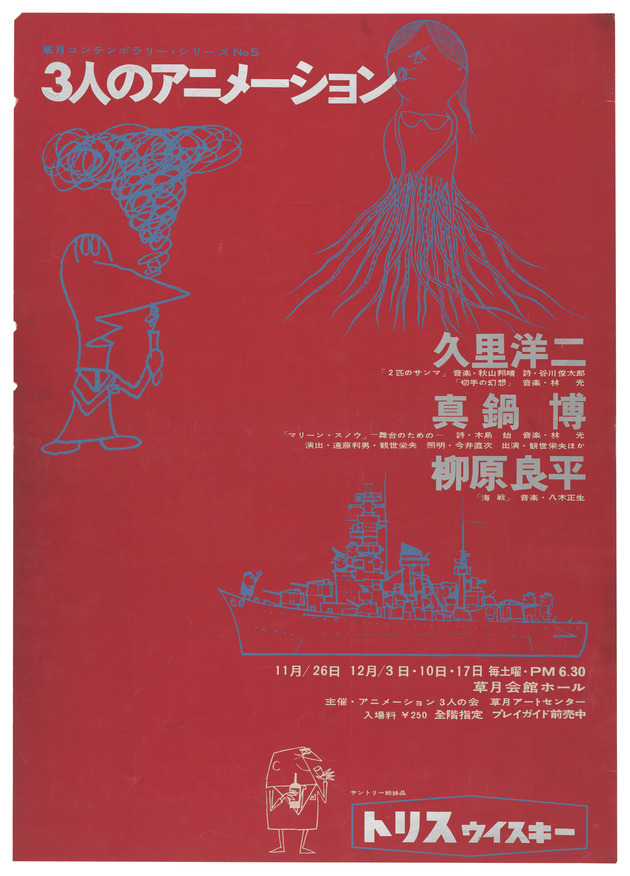
Event date: November 26, December 3, 10, 17, 1960. 724 x 513 mm. KUAC catalog no. 067 (c). Courtesy Sogetsu Foundation and The Keio University Art Center (KUAC)
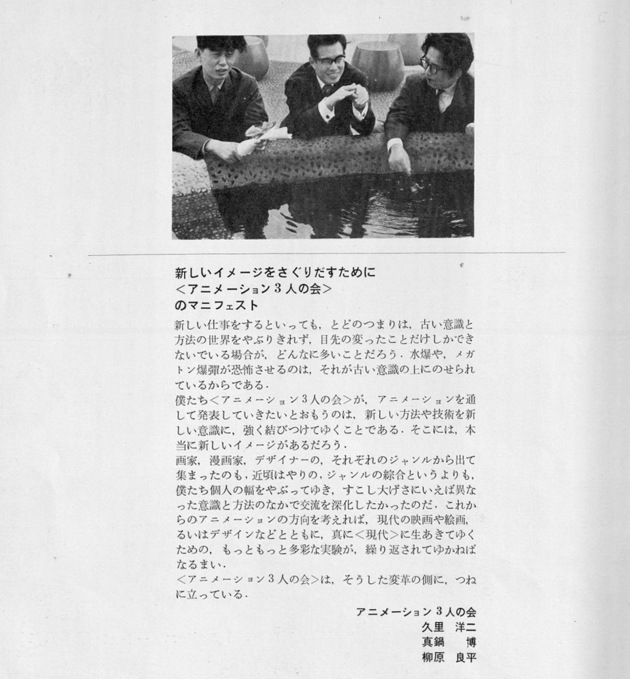
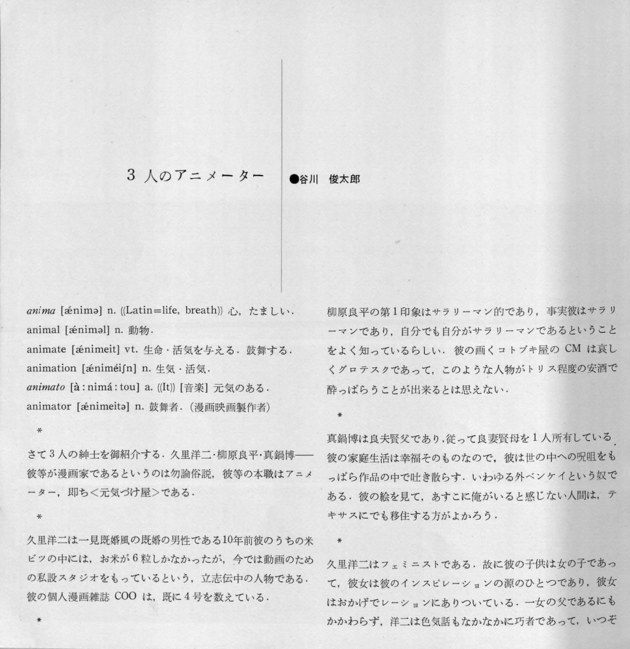
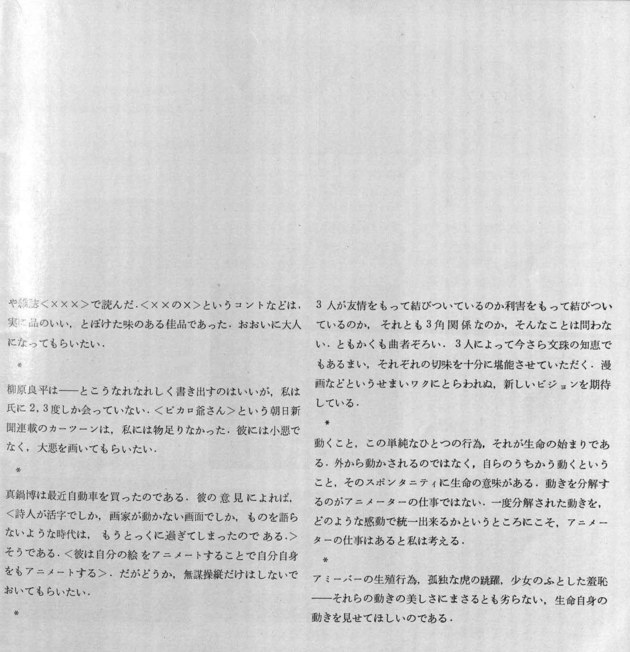
Royal Belgian Film: Special Award-Winning World Experimental Film (1964)
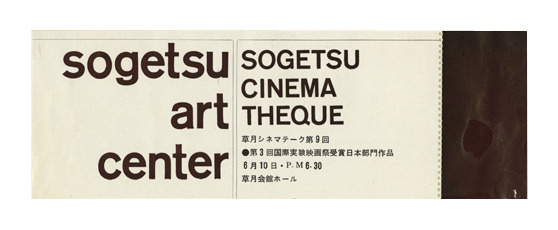
Event date: June 10, 1964. KUAC item no. 170 (c). Courtesy Sogetsu Foundation and Keio University Art Center (KUAC)
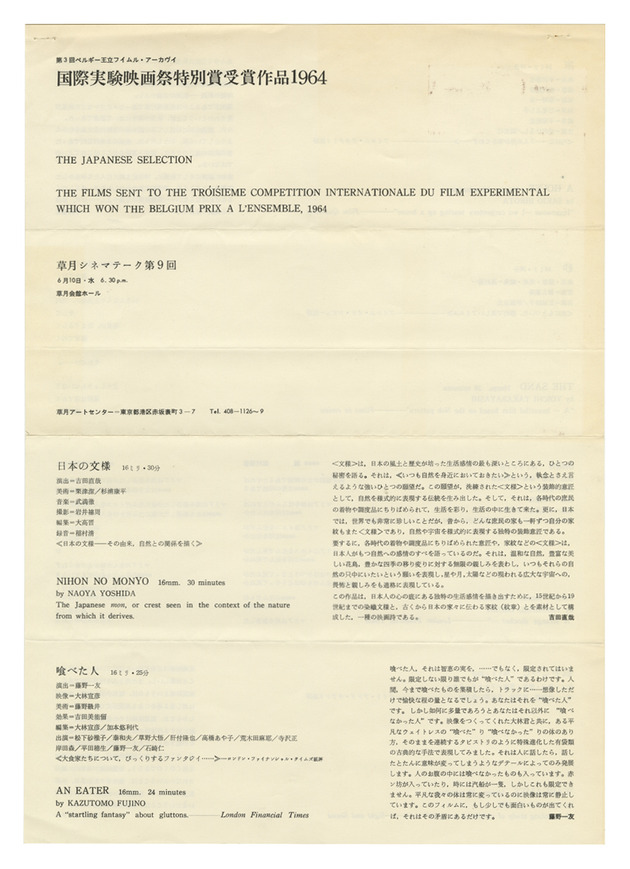
Event date: June 10, 1964. KUAC item no. 170 (b). Courtesy Sogetsu Foundation and Keio University Art Center (KUAC)
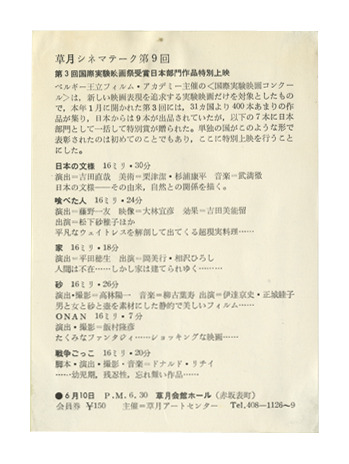
Event date: June 10, 1964. KUAC item no. 170 (a). Courtesy Sogetsu Foundation and Keio University Art Center (KUAC)
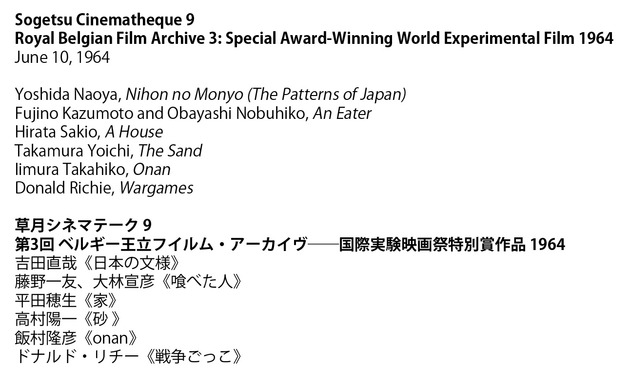
Animation Festival (1964)
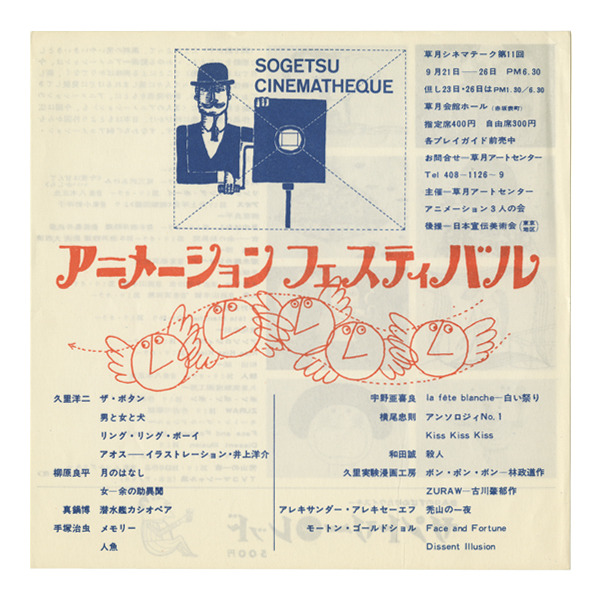
Event date: September 21–26, 1964. KUAC item no. 180 (a). Courtesy Sogetsu Foundation and Keio University Art Center (KUAC)

Event date: September 21–26, 1964. KUAC item no. 180 (d). Courtesy Sogetsu Foundation and Keio University Art Center (KUAC)

Event date: September 21–26, 1964. KUAC item no. 180 (c). Courtesy Sogetsu Foundation and Keio University Art Center (KUAC)
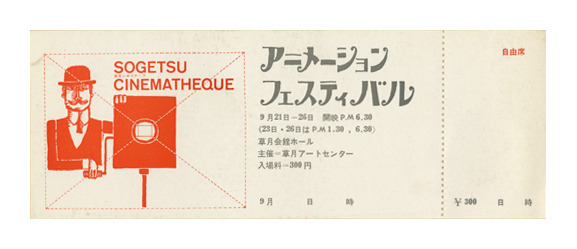
Event date: September 21–26, 1964. KUAC item no. 180 (d). Courtesy Sogetsu Foundation and Keio University Art Center (KUAC)
Underground Cinema: Japan and U.S.A. (1966)

Event date: June 29–July 2, 11–12, 1966. Poster. 724 x 511 mm. KUAC item no. 204 (e). Courtesy Sogetsu Foundation and Keio University Art Center (KUAC)

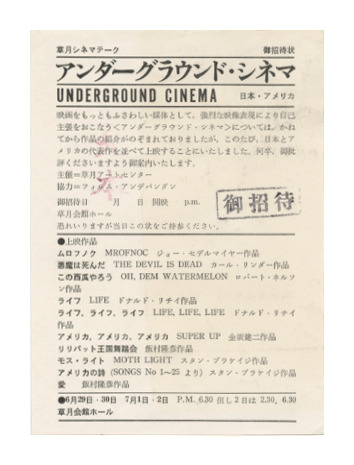
Event date: June 29–July 2, 11–12, 1966. KUAC item no. 204 (c). Courtesy Sogetsu Foundation and Keio University Art Center (KUAC)
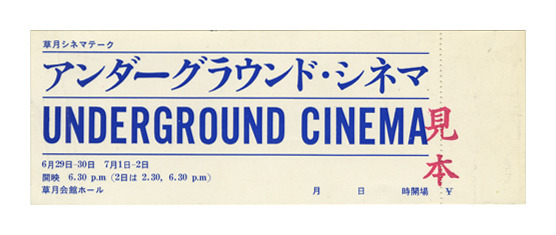
Event date: June 29–July 2, 11–12, 1966. 61 x 174 mm. KUAC item no. 204 (d). Courtesy Sogetsu Foundation and Keio University Art Center (KUAC)
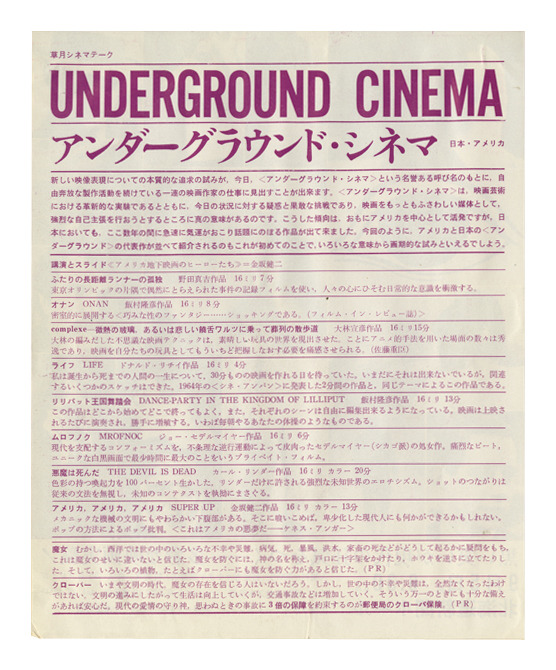
Event date: September 5, 1966. 214 x 174 mm. KUAC item no. 204 trav. Courtesy Sogetsu Foundation and Keio University Art Center (KUAC)
1st Sogetsu Experimental Film Festival (1967)

Event date: November 19, 1967. 251 x 177 mm. KUAC item no. 236. Courtesy Sogetsu Foundation and Keio University Art Center (KUAC)
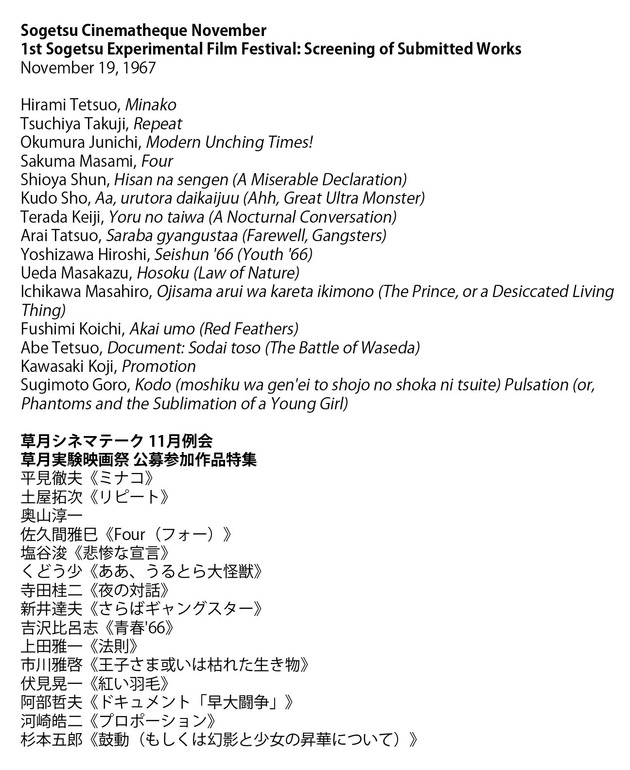
Expose 1968: Say Something I’m Trying (1968)
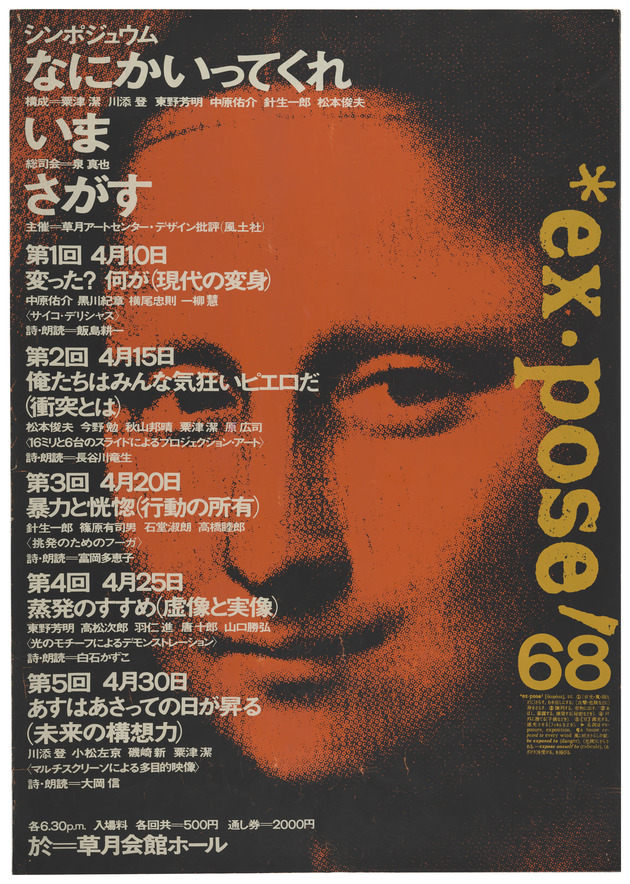
Event date: April 10, 1968. Poster. 1025 x 725 mm. KUAC item no. 241 (g). Courtesy Sogetsu Foundation and Keio University Art Center (KUAC)
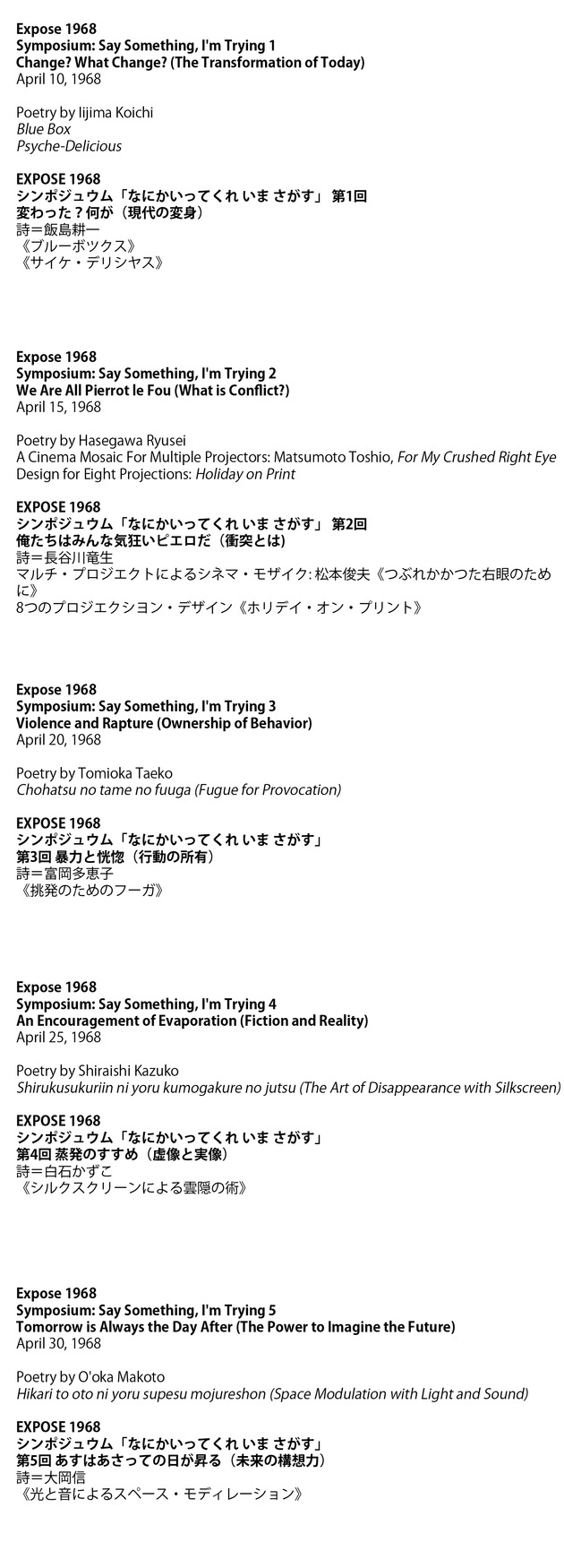

Event date: April 10, 1968. KUAC item no. 241 (f). Courtesy Sogetsu Foundation and Keio University Art Center (KUAC)
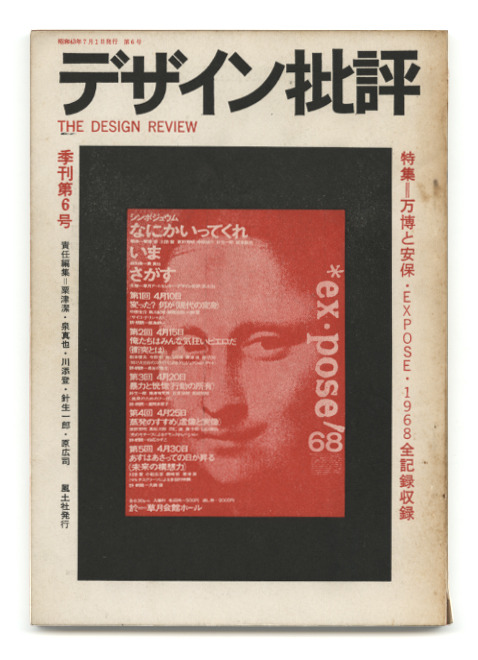
Event date: April 10, 1968. KUAC item no. 241 (f). Courtesy Sogetsu Foundation and Keio University Art Center (KUAC)
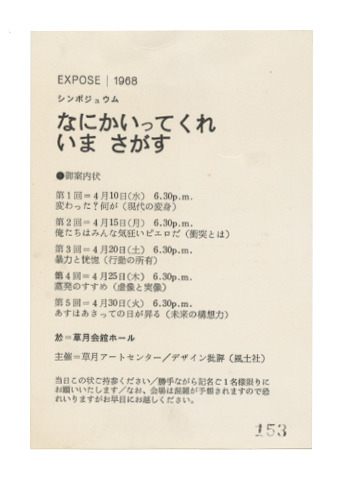
Event date: April 10, 1968. KUAC item no. 241 (e). Courtesy Sogetsu Foundation and Keio University Art Center (KUAC)
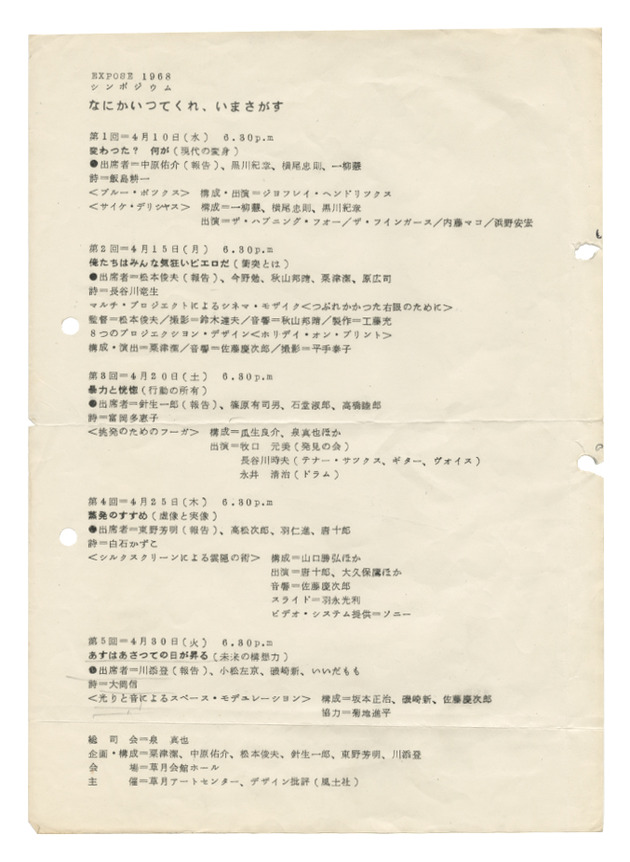
Event date: April 10, 1968. KUAC item no. 241 (c). Courtesy Sogetsu Foundation and Keio University Art Center (KUAC)
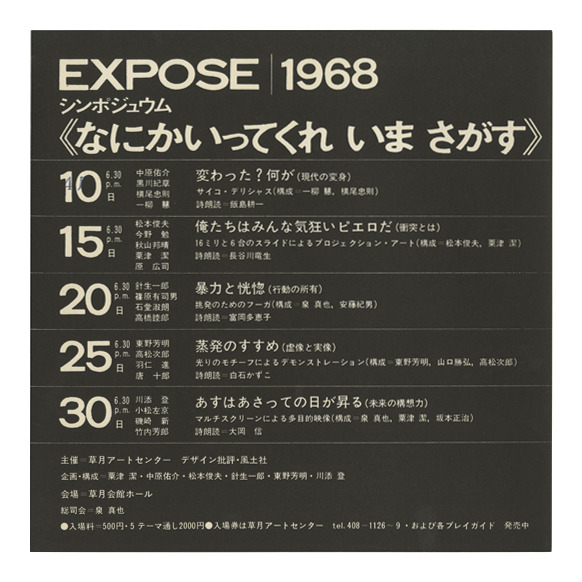
Event date: April 10, 1968. KUAC item no. 241 (e). Courtesy Sogetsu Foundation and Keio University Art Center (KUAC)
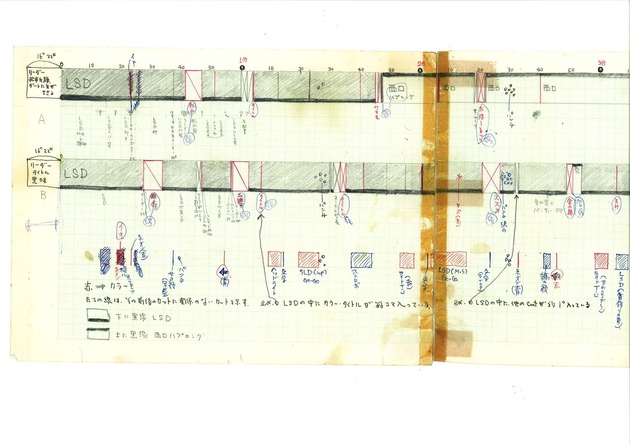
Tsuburekakatta migime no tame ni [For the Damaged Right Eye]. Having set out to document the events of 1968, an era of diverse and complex developments, Matsumoto began to sense the limitations of film as a linear and short-sighted method. As a result, he developed a technique that made use of a multiprojection system with three projectors. The film was screened in April 1968 at an avant-garde symposium that was held at Sōgetsu Hall, called Nanika ittekure, imasagsu (Expose 1968 / Symposium: Say Something, I’m Trying 1).
© Matsumoto Toshio. Courtesy the artist and Postwar Japan Moving Image Archive (PJMIA)
Tokyo Film Art Festival (1968)
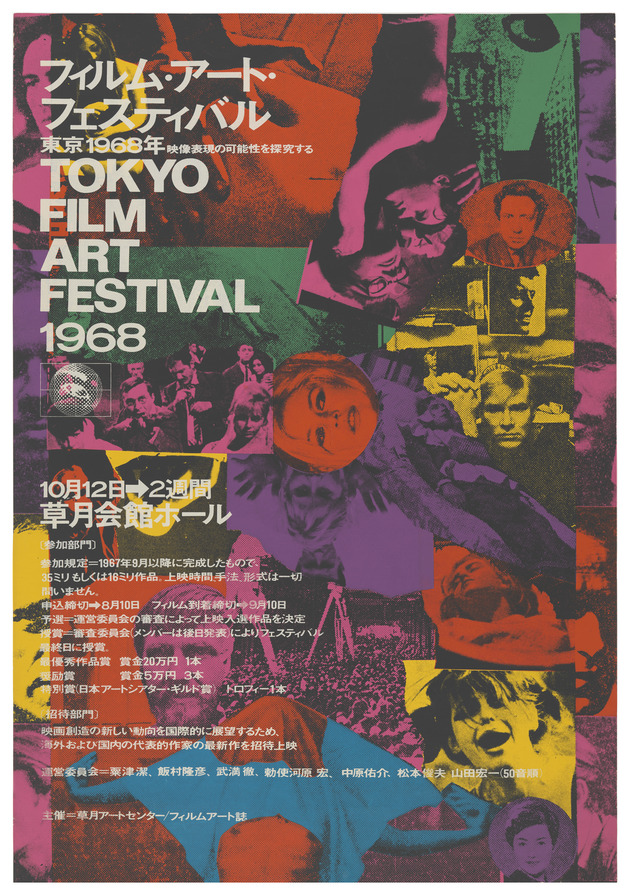
Event date: October 18–30, 1968. Poster. 742 x 512 mm. KUAC item no. 256 (h). Courtesy Sogetsu Foundation and Keio University Art Center (KUAC)

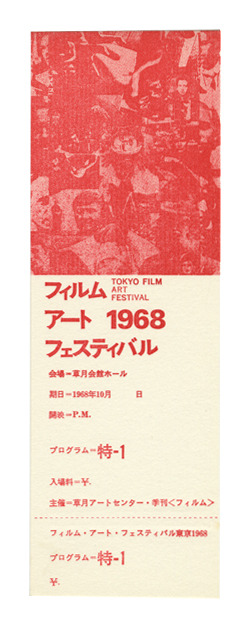
Event date: October 18–30, 1968. 200 x 68 mm. KUAC item no. 256 (ggggggg). Courtesy Sogetsu Foundation and Keio University Art Center (KUAC)
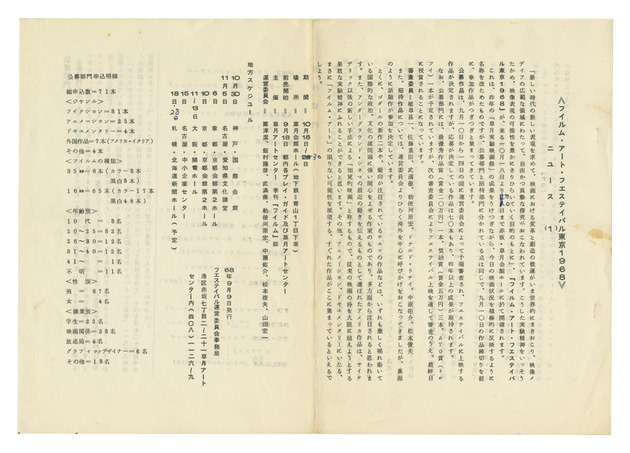
Event date: October 18–30, 1968. 253 x 361 mm. KUAC item no. 256 (f). Courtesy Sogetsu Foundation and Keio University Art Center (KUAC)
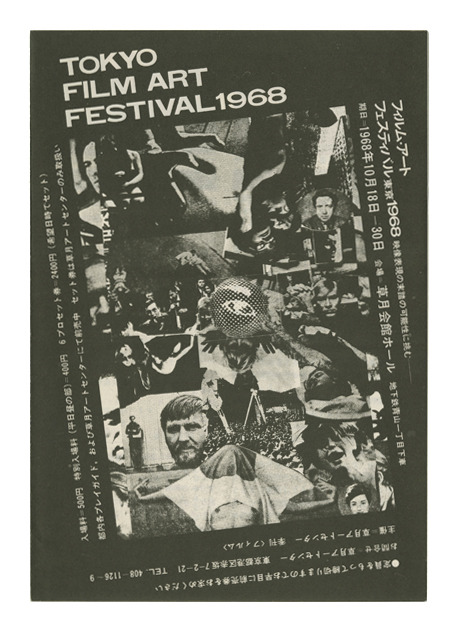
Event date: October 18–30, 1968. 201 x 140 mm. KUAC item no. 256 (c). Courtesy Sogetsu Foundation and Keio University Art Center (KUAC)
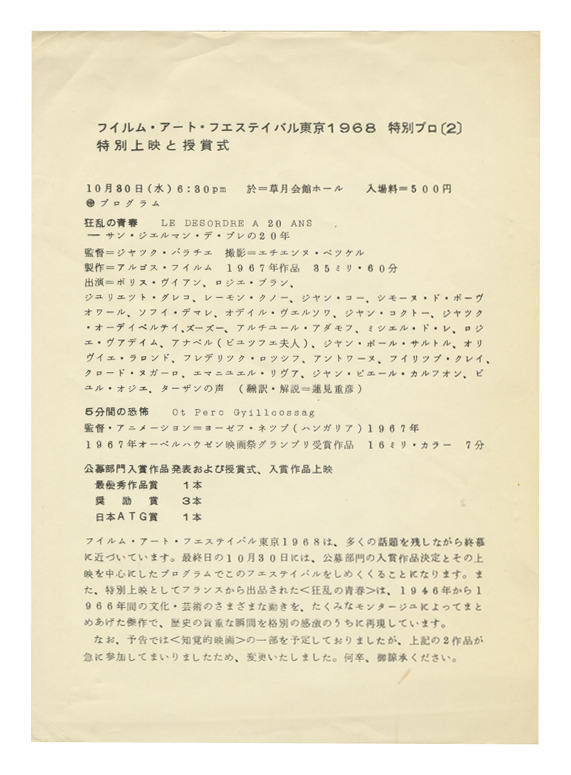
Event date: October 18–30, 1968. 251 x 180 mm. KUAC item no. 256 (e). Courtesy Sogetsu Foundation and Keio University Art Center (KUAC)
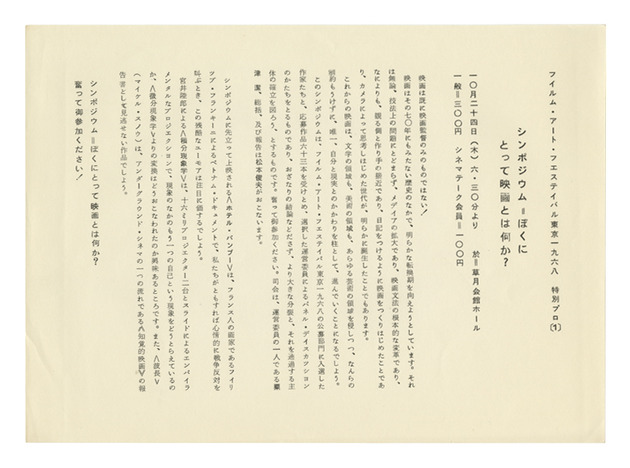
Event date: October 18–30, 1968. 182 x 253 mm. KUAC item no. 256 (d). Courtesy Sogetsu Foundation and Keio University Art Center (KUAC)
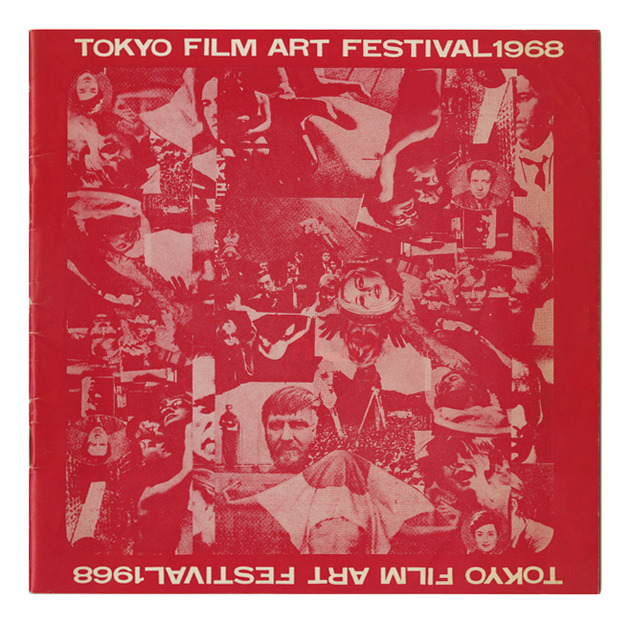
Event date: October 18–30, 1968. 208 x 210 mm. KUAC item no. 256 (a). Courtesy Sogetsu Foundation and Keio University Art Center (KUAC)
